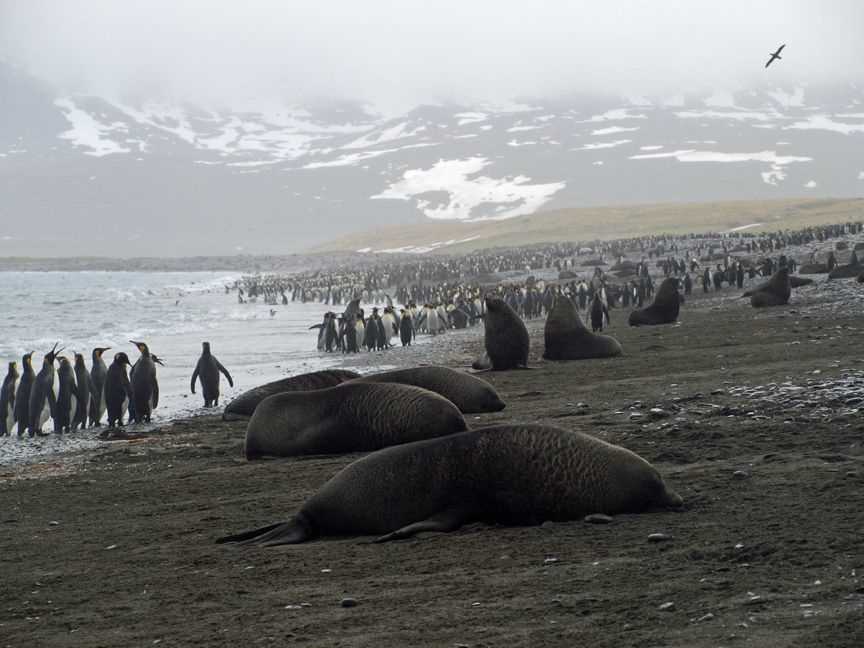We had a great introduction yesterday to the weather, geography, and wildlife of South Georgia, this most extraordinary subantarctic island. But today someone turned the volume knob up to eleven! In the morning we landed at Salisbury Plain in the Bay of Isles. Spread out between the Grace and Lucas Glaciers, the plain was named by Englishman John Chaplin, surveyor for the Discovery Investigations 1926-1930. While the flat expanse may resemble its’ namesake in England, the surrounding dark, glaciated mountains place it in a different setting entirely. King penguins in the ocean, on the beach, across the plain and in the second largest colony on South Georgia were spread out before us whichever direction we looked. Fur seals battled for territory on the foreshore, along with elephant seal beach masters protecting their harems. The old saying “nature is red in tooth and claw” was driven home as some of us watched what none of us had seen before, a fur seal catching and killing a king penguin in the shallow waters. The ever-present giant petrels were the primary benefactors for an easy meal. The rest of the morning we took in the sights and sounds of more than 100,000 penguins; breeding adults, younger non-breeders, and the fuzzy brown “oakum boy” chicks which hatched last year.
For the afternoon, we had a short transit to one of the few places where wandering albatross, the largest flying bird, nests. While rats have recently been eradicated on the main island of South Georgia, Prion Island has remained rat-free throughout the modern era and many birds which were devastated by the rats, including petrels, pintail ducks, pipits, and, of course, prions continue to nest there. The boardwalk and guided tours ensured minimal disturbance to the nesting birds that few people ever get a chance to see, and had we been a week later, we would not have been permitted to enter. We also toured the lee shoreline of the island, exploring its’ many nooks and crannies along a rocky intertidal area draped in a wide array of lichens, algae, and the occasional napping fur seal.







